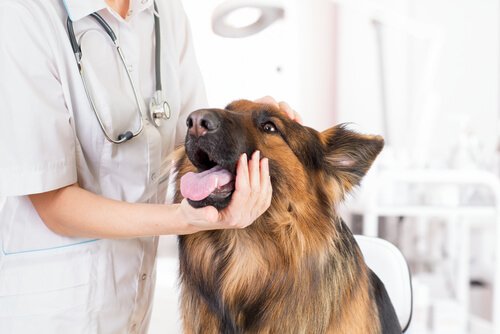What is canine ehrlichiosis?

Canine ehrlichiosis, also known as Tropical Canine Pancytopenia, Tick Disease or Canine Hemorrhagic Fever, is a widespread and serious infectious disease. A growing number of cases have appeared in Europe, America, Asia and Africa.
In recent years, cases of canine ehrlichiosis is basically due to bites from the Rhipicefalus sanguineus. This is a brown tick is a carrier of the bacterium Ehrlichia Canis (E. Canis), which is the true cause of the disease.
Eventhough this bacteria grows easily in dogs’ bodies, they can also affect cats and humans and cause serious damage to their health.
What is canine ehrlichiosis and how is it transmitted?
Canine ehrlichiosis is a widespread infectious disease caused by a specimen of the rickettsial family: the bacterium Ehrlichia Canis (E. Canis). The microorganisms of this family can also cause a number of diseases that are more benign than canine ehrlichiosis.

The first scientific record of the bacterium Ehrlichia Canis was recorded in Algeria during the 1930s. However, canine ehrlichiosis became visible during the Vietnam War. There, a good number of military dogs that died quickly from this infection.
The disease in modern times
It was oot until the 80’s that the rickettsials became important to medical studies. Ehrlichia Canis is an intracellular bacterium found in the saliva of the Rhipicefalus sanguineus tick. This small parasite has a high capacity of survival. Not only big city pets are at risk of infection; also large animals in rural areas and wild animals in warmer climates.
Canine ehrlichiosis is transmitted by getting bit from ticks infected with this bacteria. Therefore, it’s important not to let your infected dog have contact with other dogs. This will prevent the massive spread of the disease.
What are the symptoms and treatments for canine ehrlichiosis?
After infection, the incubation period in dogs can last from 2 to 6 weeks. The first symptoms of canine ehrlichiosis can take up to two months to appear:
- Lack of appetite and weight loss.
- Frequent fever
- Secretions or hemorrhages in eyes and nose.
- Difficulty breathing or heavy breathing.
- Edema in the body.
- Ecchymosis or bruising on the skin.
- Swelling of the ganglia.
Worsening of the disease
The disease can evolve if your dog doesn’t receive proper treatment after the first symptoms appear. If this take places, the symptoms will get worse and be similar to human meningitis:
- Impairment of the senses and perception.
- A tingling sensation in the limbs.
- A lack of coordination of movements.
- Limping.
- Mood swings
- Loss of consciousness or dementia
The intensity of the symptoms vary for each animal. A dog with low immunity or an older dog may show symptoms more quickly and/or more intensely than younger, healthy animals.
Getting the diagnosis in time
Early diagnosis is important to completely treat canine ehrlichiosis. At the beginning, the treatment consists of administering antibiotics for 3 to 4 weeks. If the dog has anemia, blood transfusions will be necessary.

If the disease doesn’t t reach the meninges, it’s possible for the animal to almost completely recuperate and improve his quality of life. However, damage to the meninges is usually irreversible and fatal.
It’s often difficult to recognize the symptoms of canine ehrlichiosis. They can be confused or camouflaged by symptoms of minor or benign conditions. Therefore, the best way to avoid canine ehrlichiosis is to periodically take your pet to the vet to run routine checkups and control analyses.
It’s also a good idea to take preventive action against parasites, even if your pet is not infected. To do so, periodically run an internal and external anti-parasitic treatment. You can also use soaps or anti-flea collars. Another option is using natural remedies that scare off parasites by odors that are unpleasant to them.
When it comes to canine ehrlichiosis, preventive action is better than any remedy. Therefore, just by paying close attention to your pet can save his life.
Source of the main image: Mills Baker
